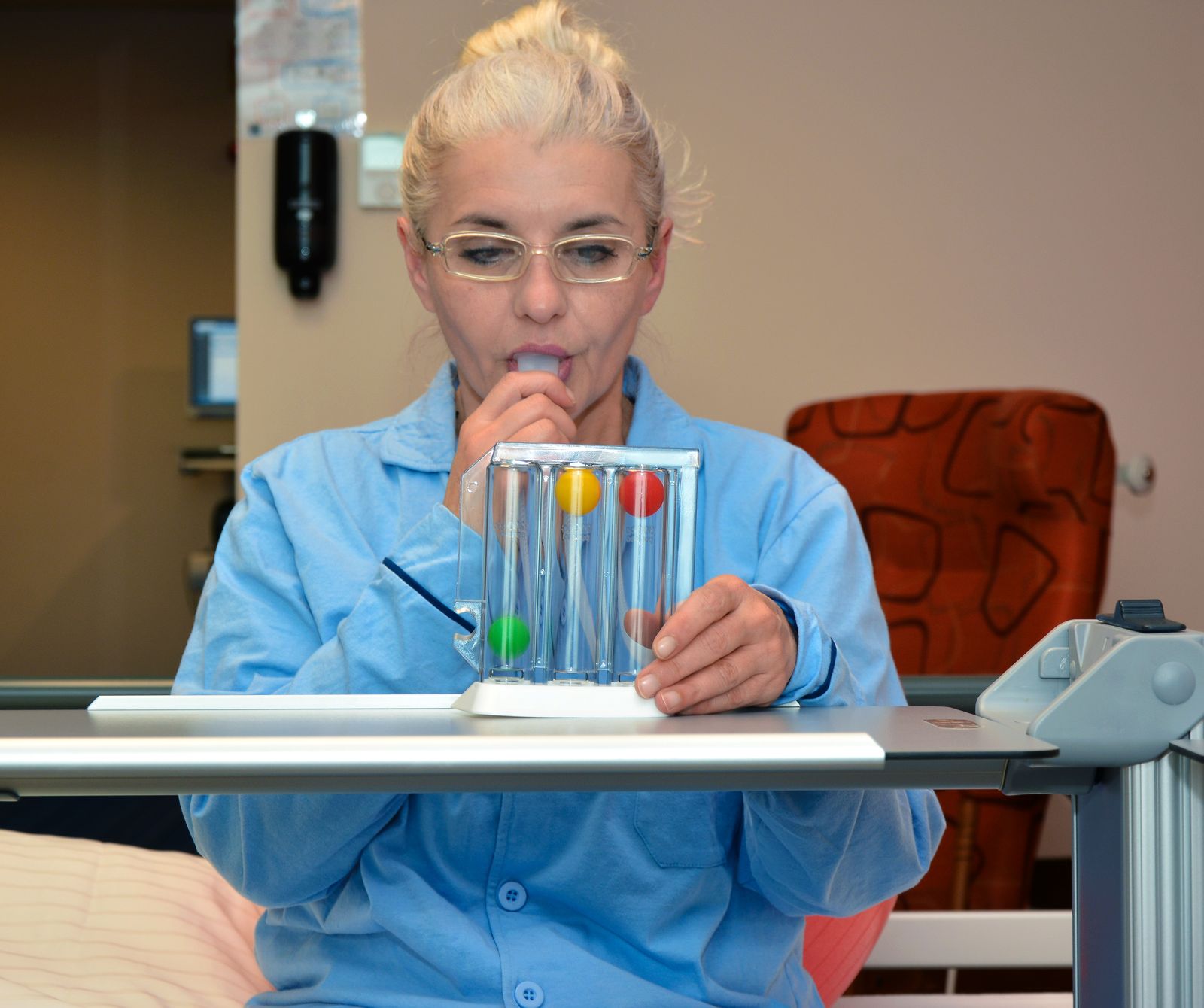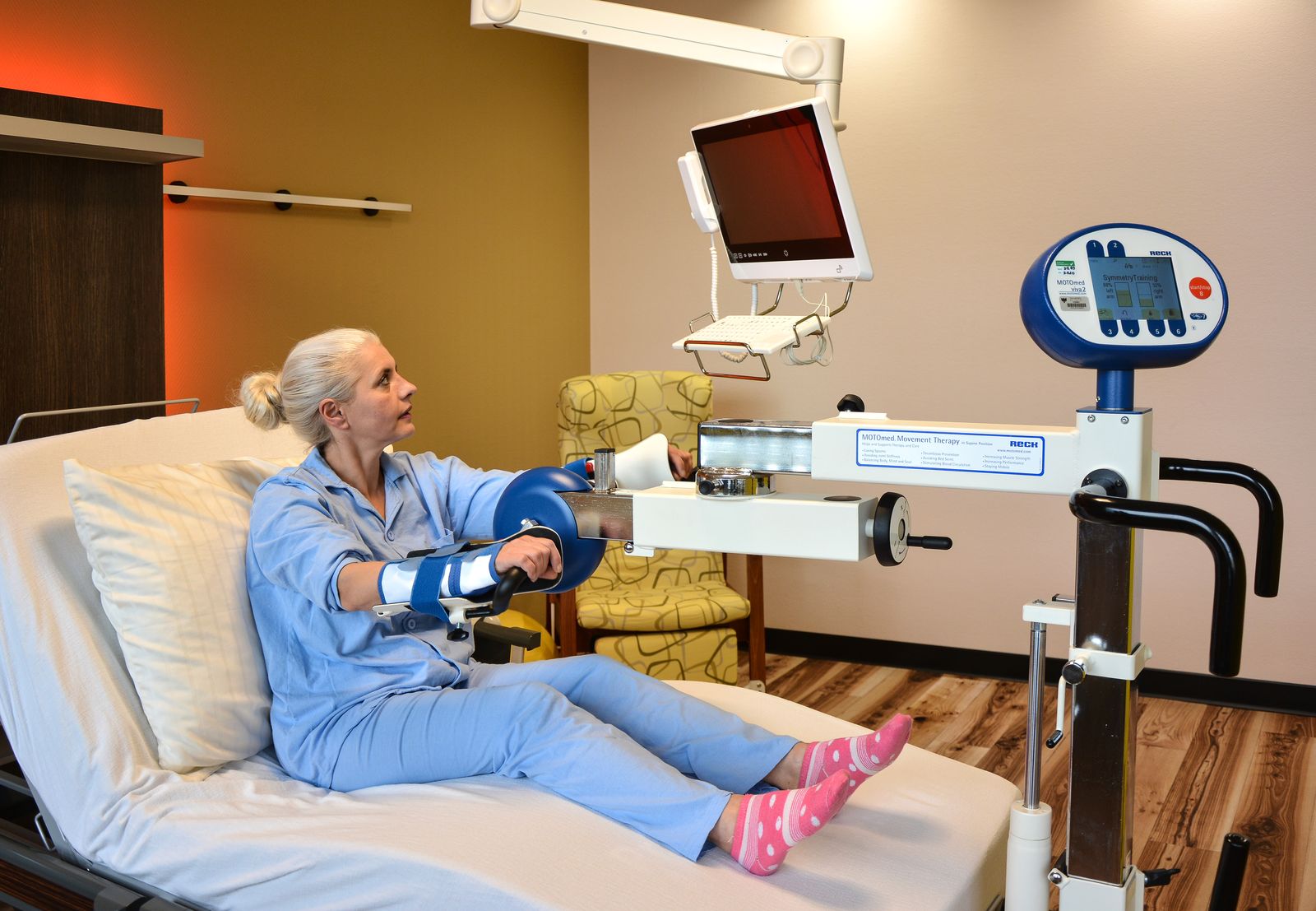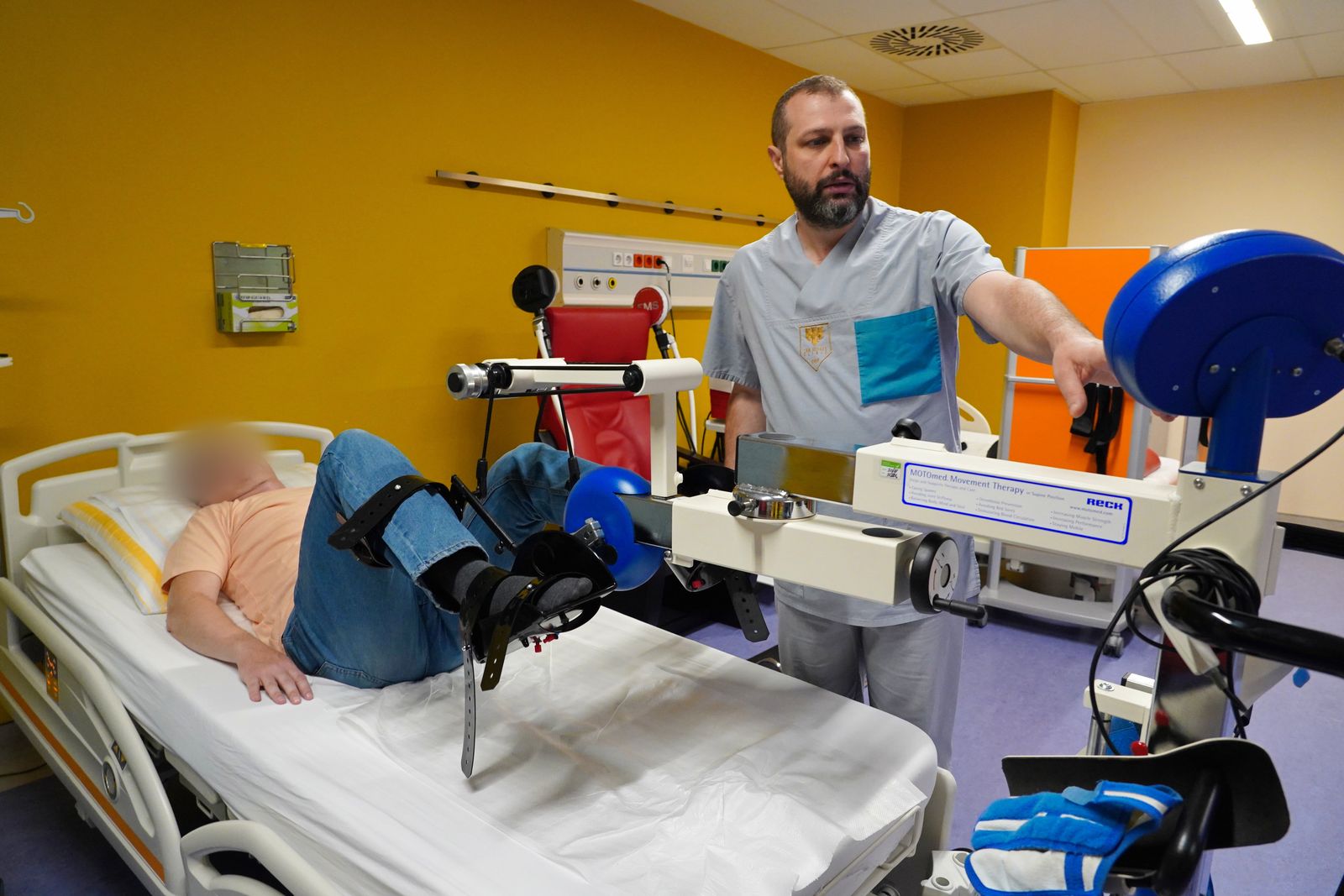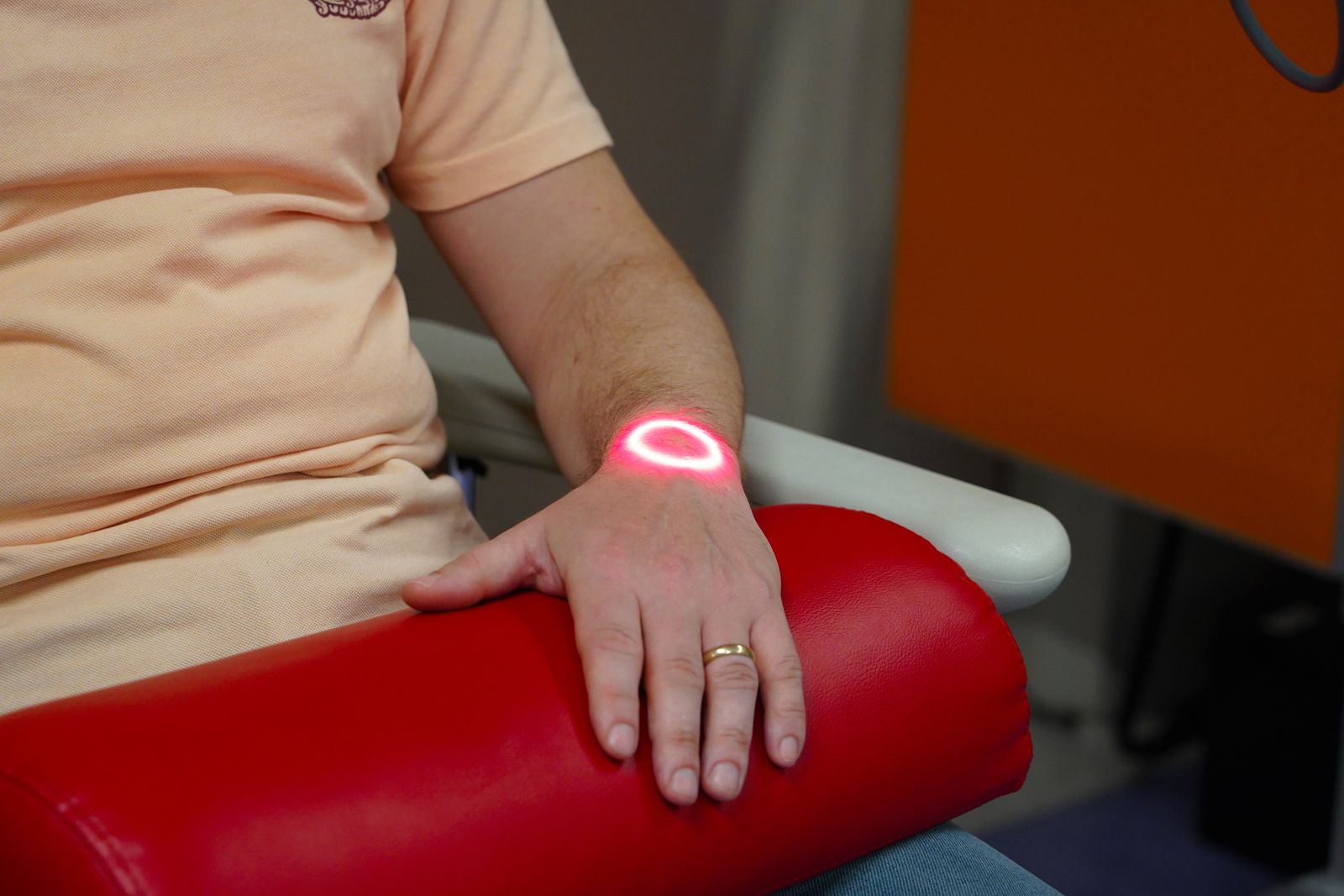 00389 2 3091 484
00389 2 3091 484
Medical Services
Physical Therapy
Respiratory physical therapy
Respiratory physical therapy increases the strength, endurance and efficiency of the respiratory muscles. The therapy in fact, increases the lung volume and improves the exchange of gases. That leads to reduction of the patient’s effort for proper breathing and enables relaxation of the breathing muscles.
In order to achieve that, our physical therapists formulate a plan/program of activities that enables to reinstate the mobility, muscle and respiratory strength of the patients in intensive care. If the patient is inactive, immobile, it leads to consequences on their cardiovascular, neuromuscular and respiratory systems.
CPAP (continuous positive airway pressure) is a respiratory therapy method which retains the airway pressure permanently during the complete respiratory cycle using mechanical ventilation devices.

Early mobilization
Early mobilization in intensive care is much more than changing the patient’s position. It is a preventive form of physical and cognitive rehabilitation, engagement of a critically ill patient in an activity that will help to recover and improve the condition of the cardiopulmonary system, preventing reduction of the muscular strength and occurrence of joint contractures.
This effort can be a difficult process, but early start of at least minimal daily activity, possibly at the very beginning of the stay in the intensive care unit enables the patent greater physical independence, greater chances for rapid discharge from hospital to continue the rehabilitation at home and reduces the delirium rate caused by longer hospital stay.
The positive effects of early mobilization include improvement of the peripheral circulation, of the lung functional capacity as well as improvement of the strength, endurance and efficiency of the respiratory muscles. It also enables improvement of the mucociliary clearance and the act of expectoration and prevents thrombosis, pneumonia, atelectasis and other complications.

Postoperative physical therapy
The main objective of the postoperative physical therapy is to incentivize reinflation of the respiratory system, i.e., atelectatic areas of the lugs and maintain appropriate ventilation, assist the removal of excess bronchial secretion and maintenance of the respiratory tract humidity.
As well as assisting the general mobility of the patient, out of the bed i.e., for early mobilization of the patient. Prevention against reduced mobility of the joints or bad body posture as a result of invasive lines, tracheal tubes, drainage, as well as monitoring of relevant and timely relieve of the pain and appropriate oxygen therapy, according to the individual needs of each patient.

Electrotherapy
Neuromuscular stimulation is achieved by sending electric pulsation through the skin to the nerves and muscles in order to create involuntary muscular contraction. Since the stimulation of nerves and muscles can be achieved through electric pulsations, this modality can assist in prevention of muscular atrophy.
Therefore, the patient can be treated using therapeutic treatment for muscular contraction which will improve and maintain the tonus of the muscles without physical activity.
The functional magnetic stimulation also known as FMS therapy is a stimulation method that induces electric current in the neurons through a rapid change of the magnetic field intensity. When the current reaches a certain value, the neurons reach so called action potential. This depolarizes the neuron which in fact contributes to complete muscle contraction through sending a signal to the motor unit. It is a non-invasive and painless method which is based on the electromagnetic field under a high intensity of 2.5 T which enables contactless stimulation of the surface and deep tissues.
By changing the type of the impulses and their intensity, various therapeutic modules are received and used for the following indications:
- Spasm reduction
- Impingement syndrome and frozen shoulder
- Regeneration of nerves, neuralgia, neuritis, polyneuropathy
- Carpal tunnel syndrome
- Degenerative rheumatism
- Healing of fractures
- Ruptures of muscles, tendons and ligaments
- Patellar tendinopathy
- Epicondylitis
- Preventing muscle atrophy
- Acute and chronic lumbar syndrome (lumbago and sciatica)
- Acute and chronic degeneration of the intravertebral discs (discus hernia)
- Acute and chronic radiculopathy
- Rehabilitation of traumatic muscle or nerve
- Treatment of acute pain
- Urinary incontinences
- Fecal incontinence
- Erectile dysfunction
- Rehabilitation after radical prostatectomies
- Chronic prostatitis
- Strengthening of the pelvic floor muscles
Duration of the treatments 20-40 minutes depending on the diagnosis.
Number of treatments 10 to 15 according to protocol depending on the diagnosis.
It can be combined with other physical therapy services.


